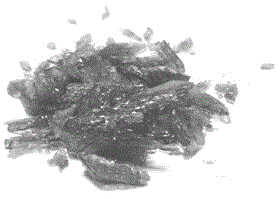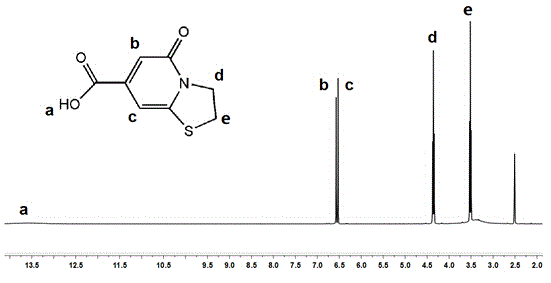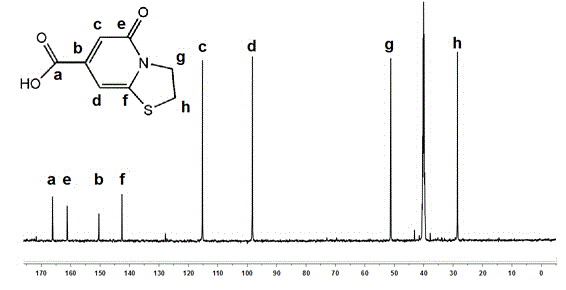Fluorescent molecular TPCA and preparation method thereof
A technology for fluorescent molecules and drying, which is applied in chemical instruments and methods, luminescent materials, organic chemistry, etc., can solve the problems that the fluorescence efficiency of products cannot be further improved, and achieve simple and fast process methods, cheap and easy-to-obtain raw materials, and mild and environmentally friendly reaction conditions Effect
- Summary
- Abstract
- Description
- Claims
- Application Information
AI Technical Summary
Problems solved by technology
Method used
Image
Examples
Embodiment 1
[0024] Disperse 4 g of citric acid and 0.32 g of mercaptoethylamine into 20 mL of deionized water, stir evenly, put into a hydrothermal reaction kettle, react at 200°C for 5 h, and cool naturally. After cooling, let stand, wash with deionized water, and dry in vacuum to obtain solid TPCA.
[0025] Take a sample and test the product. figure 1 It is a physical photo of TPCA, which is a dark brown crystal, and the yield is 20%. figure 2 It is the mass spectrum of TPCA, m / z 196 is the molecular ion peak. image 3 for TPCA 1 HNMR spectrum (the solvent is deuterated dimethyl sulfoxide), the chemical shifts of all hydrogens in TPCA are shown in the figure, where the integral ratio of peaks b, c, d, and e is 1:0.97:2.04:2.04, which is consistent with the theory than close; Figure 4 for TPCA 13 The CNMR spectrum (the solvent is deuterated dimethyl sulfoxide), and the chemical shifts of all carbons in TPCA are shown in the figure. Figure 5 It is a photograph of an aqueous solut...
Embodiment 2
[0027] Disperse 1g of citric acid and 0.01g of mercaptoethylamine into 10mL of distilled water, stir evenly, put them into a hydrothermal reaction kettle, react at 100°C for 100h, and cool naturally. After cooling, let it stand, wash with distilled water, and dry at room temperature (0-25°C) to obtain solid TPCA.
Embodiment 3
[0029] Disperse 0.01g of citric acid and 0.001g of mercaptoethylamine into 5mL of deionized water, stir evenly, put into a hydrothermal reaction kettle, react at 300°C for 0.1h, and cool naturally. After cooling, let it stand, wash with distilled water, and dry at medium temperature (30-60°C) to obtain solid TPCA.
PUM
| Property | Measurement | Unit |
|---|---|---|
| particle diameter | aaaaa | aaaaa |
Abstract
Description
Claims
Application Information
 Login to View More
Login to View More - R&D
- Intellectual Property
- Life Sciences
- Materials
- Tech Scout
- Unparalleled Data Quality
- Higher Quality Content
- 60% Fewer Hallucinations
Browse by: Latest US Patents, China's latest patents, Technical Efficacy Thesaurus, Application Domain, Technology Topic, Popular Technical Reports.
© 2025 PatSnap. All rights reserved.Legal|Privacy policy|Modern Slavery Act Transparency Statement|Sitemap|About US| Contact US: help@patsnap.com



